[Newsbits] 18-20.02.2024 – Bima Sugam, Sominsai Festival, ANUVADINI & more

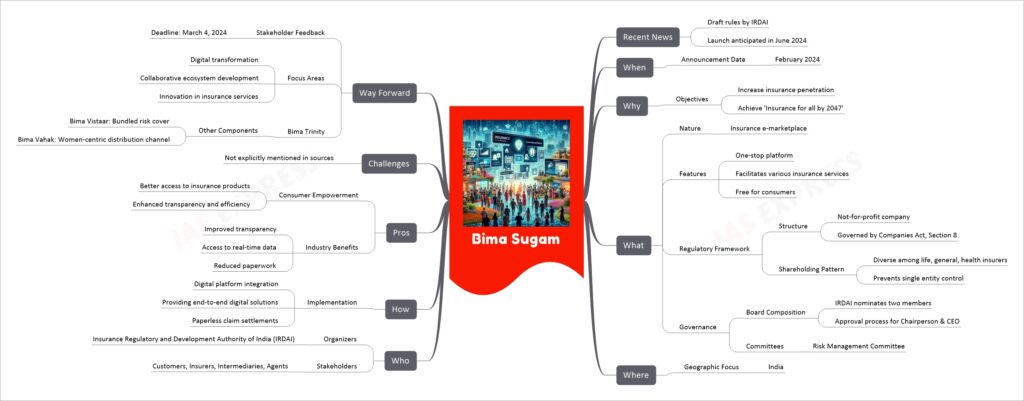
Bima Sugam is an innovative digital initiative by the Insurance Regulatory and Development Authority of India (IRDAI) aiming to revolutionize the insurance sector in India. Slated for launch in June 2024, it is designed as a comprehensive insurance e-marketplace to facilitate a seamless and transparent insurance experience. Bima Sugam will offer a single platform for various insurance services, making them more accessible and affordable, thereby increasing insurance penetration in India. It is part of the broader Bima Trinity strategy, focusing on increasing insurance accessibility and affordability. The platform is a significant step towards achieving the national goal of ‘insurance for all by 2047’.
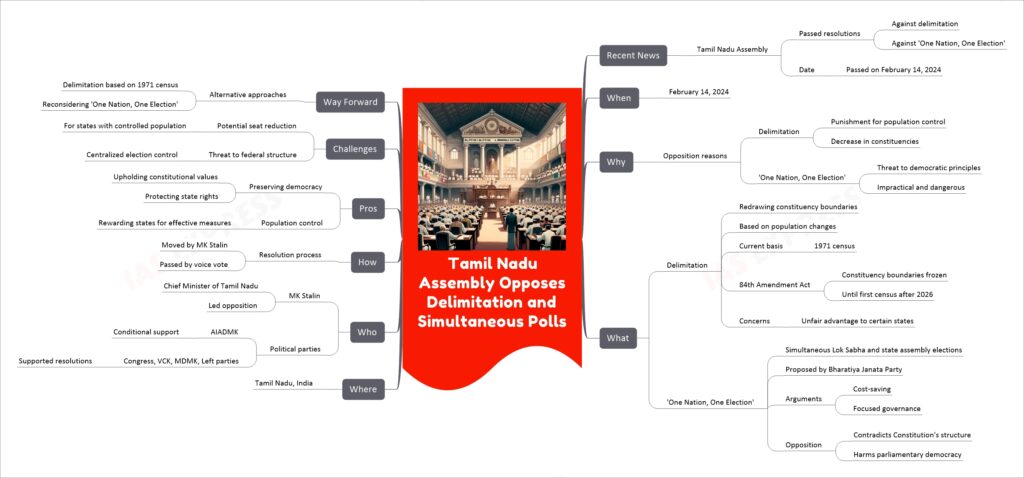
The Tamil Nadu Assembly, led by Chief Minister MK Stalin, recently passed resolutions opposing two significant electoral reform proposals by the Central Government of India. The first resolution was against the delimitation process, which involves redrawing constituency boundaries based on population changes. Tamil Nadu’s opposition stems from concerns that states with effective population control, like itself, would be unfairly penalized with fewer parliamentary seats. The second resolution opposed the ‘One Nation, One Election’ policy, aiming for simultaneous elections for the Lok Sabha and state assemblies. This proposal was criticized for being impractical and a threat to the constitutional guarantee of independent and fair elections. The Assembly, including various political parties, unanimously supported these resolutions, emphasizing the need to uphold democratic principles and state rights.
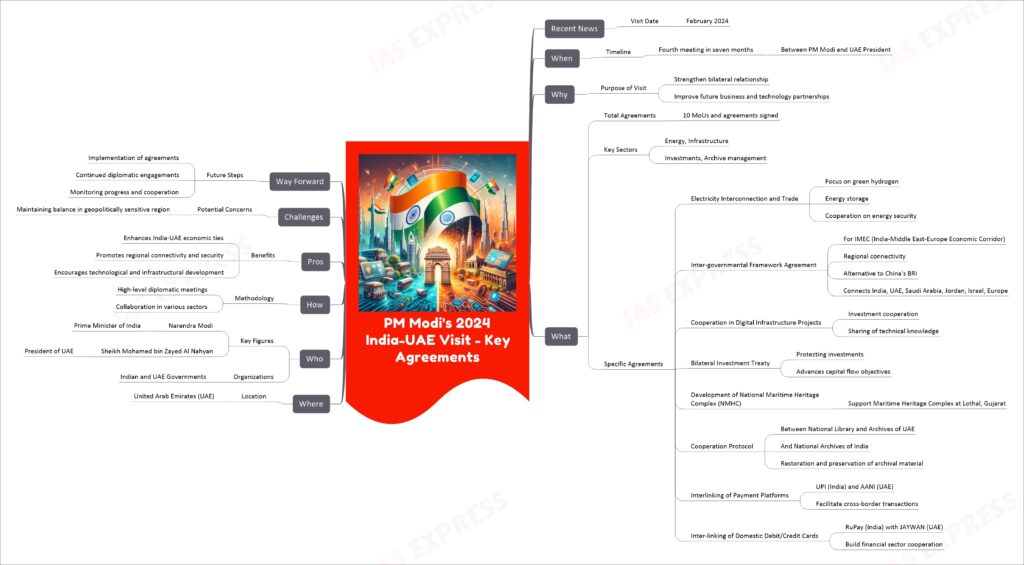
In February 2024, Indian Prime Minister Narendra Modi’s visit to the United Arab Emirates (UAE) marked a significant advancement in bilateral relations with the signing of 10 Memoranda of Understanding and agreements. These agreements, signed with UAE President Sheikh Mohamed bin Zayed Al Nahyan, cover various sectors including energy, infrastructure, investments, and archive management. Key areas of focus included the development of the India-Middle East-Europe Economic Corridor (IMEC) for regional connectivity, cooperation in digital infrastructure, and the interlinking of payment platforms like UPI and AANI. This visit and the agreements signed are pivotal in enhancing economic ties, promoting regional security and connectivity, and fostering technological and infrastructural development between India and the UAE.
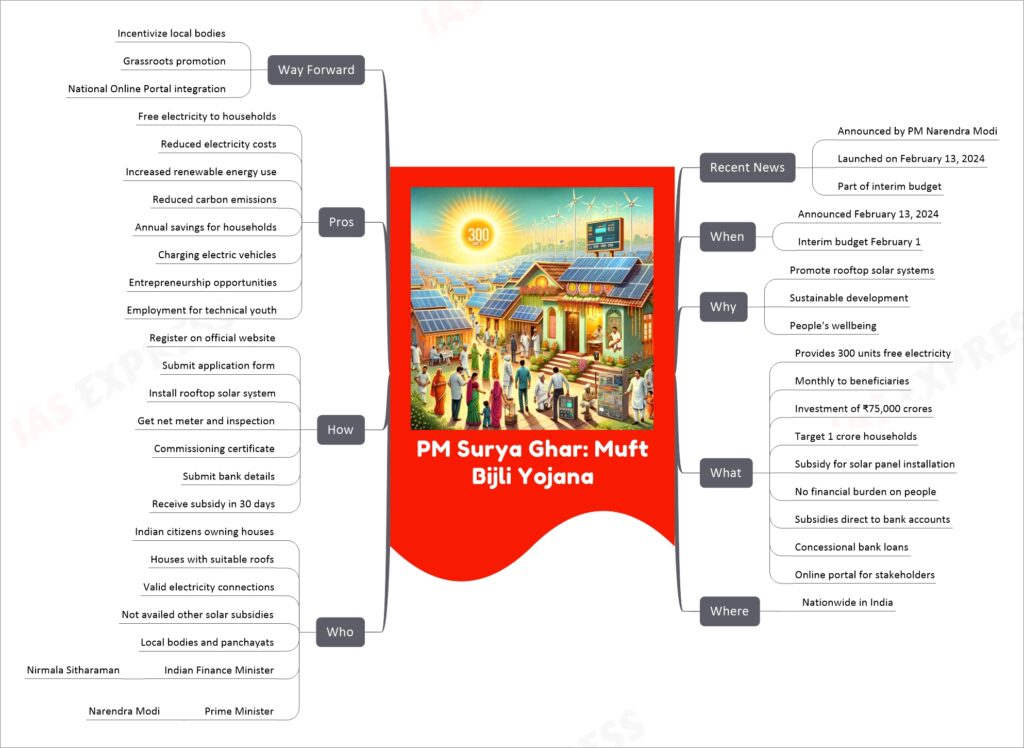
The PM Surya Ghar: Muft Bijli Yojana is a significant initiative launched by the Indian government, spearheaded by Prime Minister Narendra Modi, to promote the use of solar energy in households across India. Announced on February 13, 2024, as part of the interim budget, the scheme aims to provide up to 300 units of free electricity each month to beneficiaries, targeting approximately 1 crore households. With an investment of ₹75,000 crores, it is designed to ease the financial burden on citizens while enhancing sustainable development and well-being. The program offers subsidies for solar panel installations, with the process facilitated through an online portal. It also encourages local bodies and panchayats to promote rooftop solar systems, integrating various stakeholders and providing incentives for sustainable energy transition.
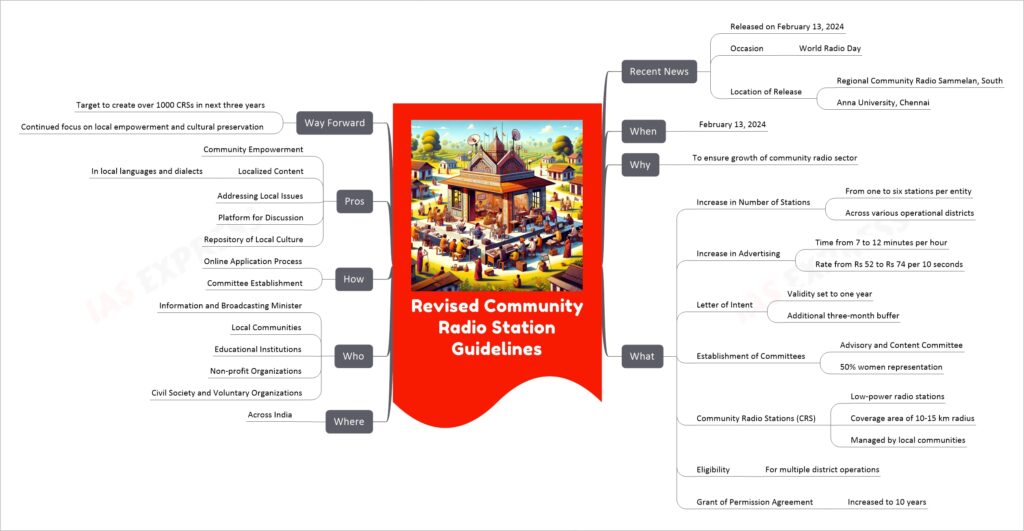
The Revised Community Radio Station Guidelines, released in February 2024, mark a significant step towards the expansion and empowerment of community radio in India. These guidelines increase the number of stations an entity can operate, raise advertising time and rates, and mandate the formation of committees with local community representation, including a 50% quota for women. They aim to strengthen local voices and address community-specific issues through radio broadcasting in local languages and dialects, thus fostering community engagement and cultural preservation.
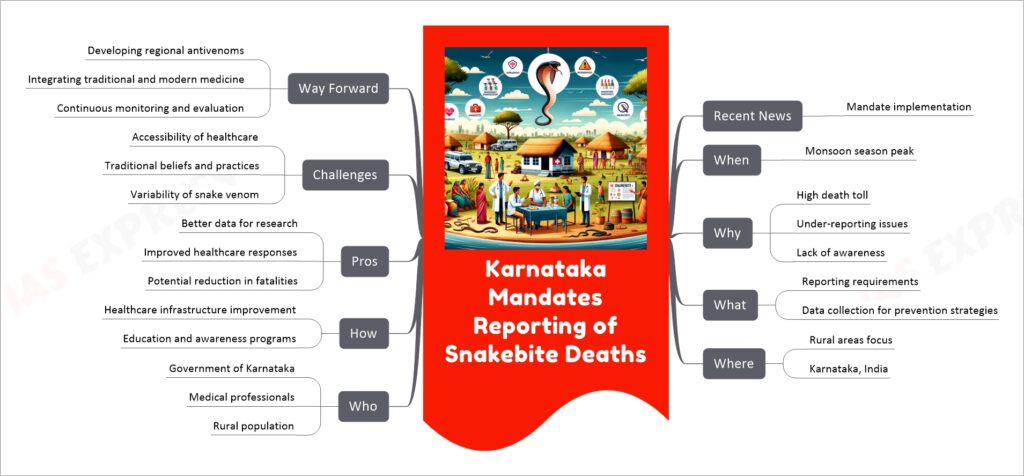
Karnataka’s mandate to report snakebite deaths is a significant development in addressing the high number of fatalities and disabilities caused by snakebites in India, particularly during the monsoon season. This mandate aims to combat the under-reporting of snakebite incidents and improve prevention and treatment strategies. The focus is on rural areas where the majority of snakebite incidents occur. This move will enhance data collection, leading to better-informed healthcare responses and potentially reducing fatalities. Challenges include healthcare accessibility, traditional beliefs, and the variability of snake venom. The way forward involves developing regional antivenoms, combining traditional and modern medical practices, and continuous monitoring.
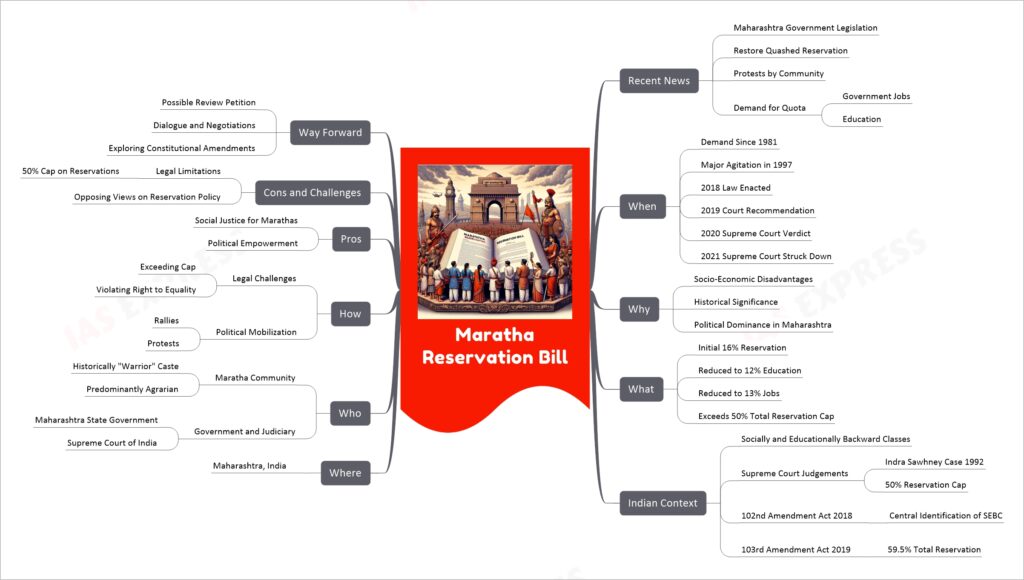
The New Maratha Reservation Bill in Maharashtra, India, aims to address the socio-economic disadvantages faced by the Maratha community by providing them with reservations in government jobs and education. Historically dominant in the state’s political landscape, the Marathas have been advocating for reservation quotas since the 1980s. The issue gained momentum in 1997 and saw significant developments in 2018 when a 16% reservation was initially granted. However, this faced legal challenges, leading to a reduction in the reservation percentages and eventual striking down by the Supreme Court in 2021 due to exceeding the 50% total reservation cap set in the 1992 Indira Sawhney judgment.
The situation is further complicated by the 102nd and 103rd Constitutional Amendment Acts, which affect the state’s power to identify Socially and Educationally Backward Classes (SEBCs) and the overall reservation percentage in India. Despite these challenges, the demand for Maratha reservation continues, marked by protests and political mobilization, highlighting the ongoing struggle for social justice and political empowerment within the legal and constitutional framework of India.
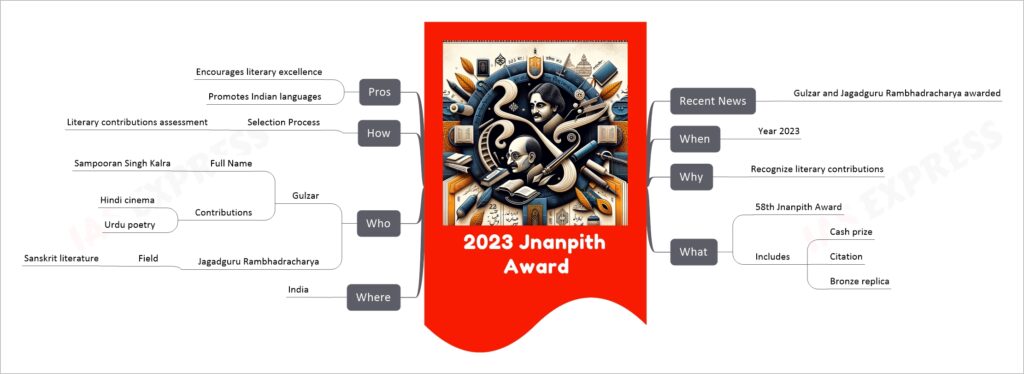
The 2023 Jnanpith Award, marking its 58th iteration, honors Gulzar and Jagadguru Rambhadracharya for their significant contributions to Indian literature. Gulzar, known for his work in Hindi cinema and Urdu poetry, and Jagadguru Rambhadracharya, a Sanskrit scholar, are recognized for their respective literary achievements. The award, symbolizing the pinnacle of Indian literary accolades, includes a cash prize, citation, and a bronze replica, fostering literary excellence and promoting the richness of Indian languages.
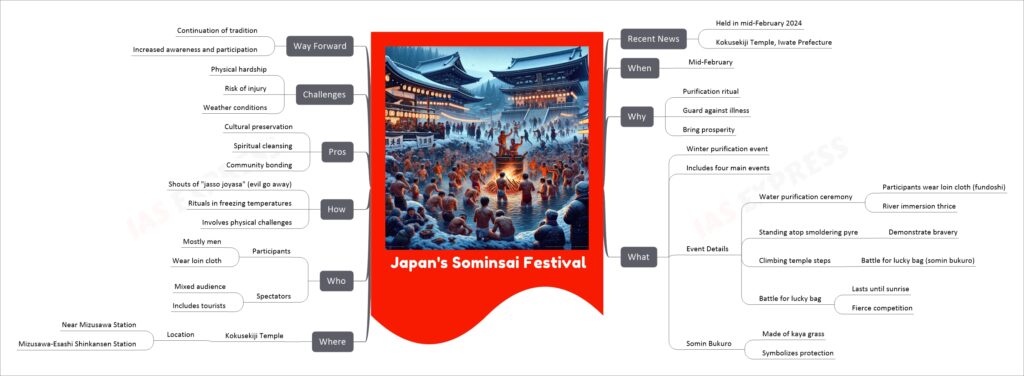
Japan’s Sominsai Festival, typically held in mid-February at Kokusekiji Temple in Iwate Prefecture, is a profound winter purification event. It serves as a ritual to guard against illness and to bring prosperity. The festival, which spans the entire night, consists of four main events, including a water purification ceremony where participants immerse themselves in a river, stand atop a smoldering pyre, and partake in a symbolic battle for a lucky bag known as ‘somin bukuro.’ The participants, mostly men wearing traditional loin cloths, endure these rituals in freezing temperatures. The event is characterized by shouts of “jasso joyasa,” meaning “evil go away,” reflecting its purpose as a spiritual cleansing and protective ritual. Despite the physical challenges and risk of injury, the festival is a significant cultural event that fosters community bonding and the preservation of traditional practices.
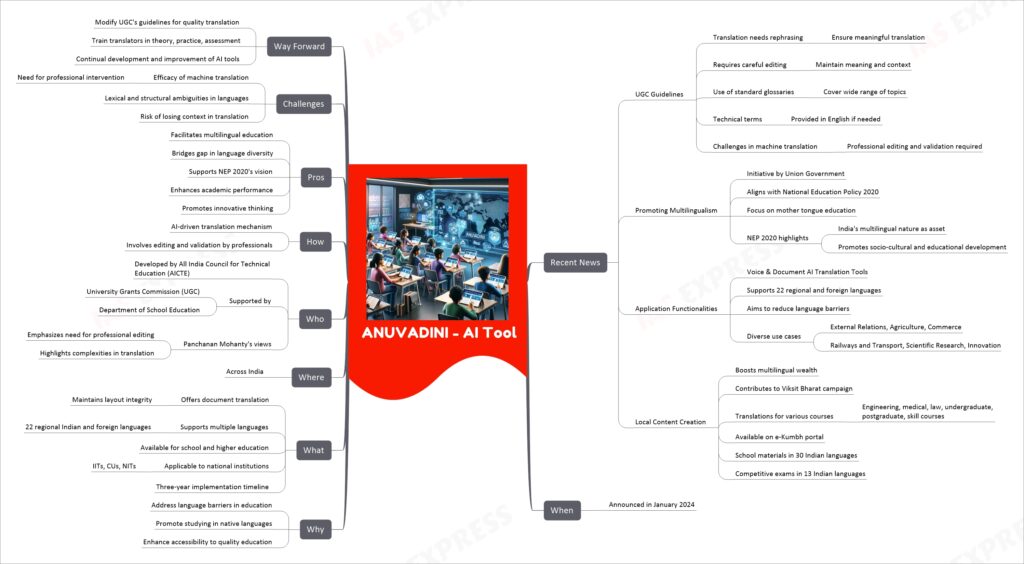
‘ANUVADINI’ is an AI-driven tool developed by the All India Council for Technical Education (AICTE) to facilitate document translation into multiple Indian languages. It’s part of an initiative to promote multilingualism in education, aligning with the National Education Policy 2020. The tool supports 22 regional and foreign languages, aiming to bridge language barriers and enhance accessibility to quality education across India. It requires careful editing and validation to ensure translations maintain the original context and meaning. This initiative is significant in enhancing academic performance and fostering innovative thinking among students by allowing them to study in their native languages.
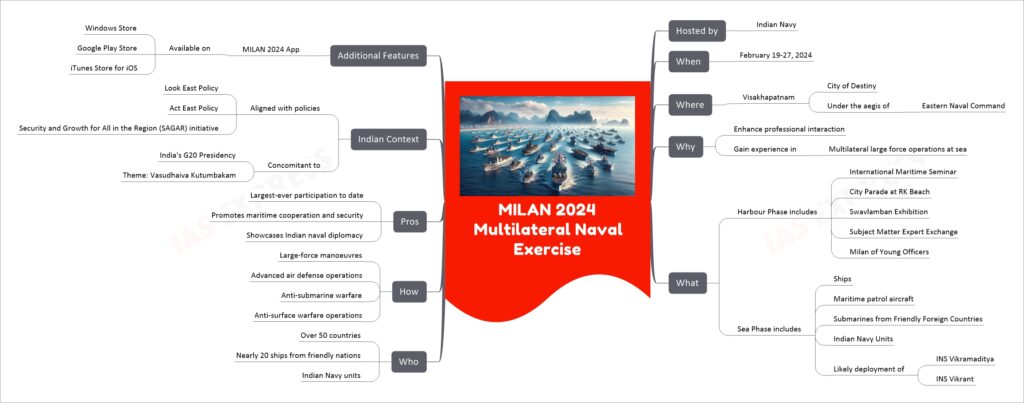
MILAN 2024 is the 12th edition of the Multilateral Naval Exercise, set to occur from February 19 to 27, 2024, in Visakhapatnam, under the Indian Navy’s organization. This exercise aims to enhance professional interaction and experience in multilateral naval operations. Over 50 countries and approximately 20 ships from friendly nations are expected to participate, marking the largest-ever participation in the exercise’s history. MILAN 2024 will include a harbor phase with various seminars and exhibitions, and a sea phase featuring advanced naval exercises. The exercise aligns with India’s Look East and Act East policies and the SAGAR initiative, emphasizing maritime security and cooperation.
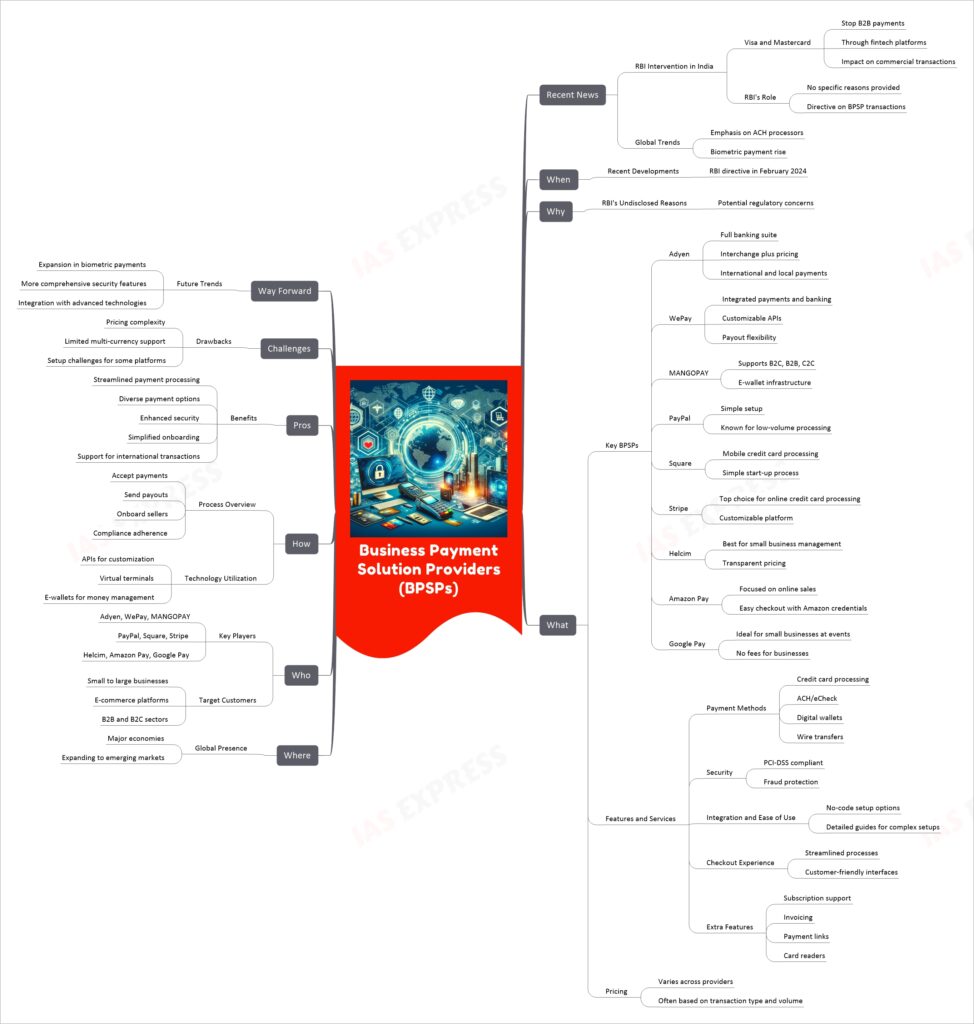
Business Payment Solution Providers (BPSPs) are companies offering technological solutions to facilitate payments for businesses. These solutions range from handling credit card processing, ACH/eChecks, to digital wallets and wire transfers. Key players in this field include Adyen, WePay, MANGOPAY, PayPal, Square, Stripe, Helcim, Amazon Pay, and Google Pay. The services these providers offer are characterized by their security (being PCI-DSS compliant), ease of integration, and streamlined checkout experiences. They are geared towards small to large businesses, e-commerce platforms, and cover both B2B and B2C sectors globally. Recent developments in this area include the Reserve Bank of India’s directive to Visa and Mastercard to stop B2B payments via fintech platforms, highlighting regulatory movements in this domain. The future of BPSPs seems to be heading towards more biometric payments, advanced security features, and further integration with cutting-edge technologies.
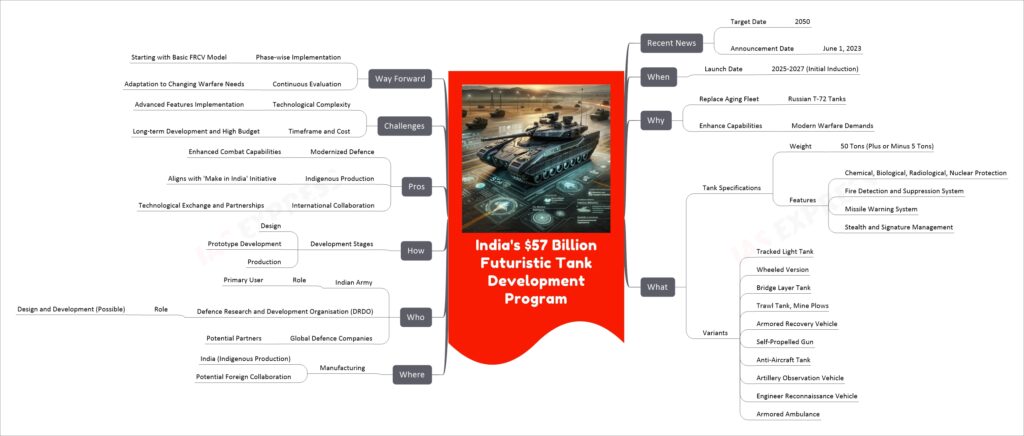
India’s $57 Billion Futuristic Tank Development Program represents a significant endeavor by the Indian Army to replace its aging fleet of Russian T-72 tanks with a new generation of advanced combat vehicles, designated as the Future Ready Combat Vehicle (FRCV). The program aims to produce tanks that are medium-weight (around 50 tons) and equipped with modern warfare capabilities like chemical, biological, radiological, and nuclear protection, advanced fire detection and suppression systems, missile warning systems, and stealth technologies. The project, expected to start inducting its first models between 2025 and 2027, is not just about upgrading military hardware but also aligns with India’s ‘Make in India’ initiative, fostering indigenous production and potential international collaborations in defense technology. The FRCV program includes various tank variants for different military roles, showcasing India’s ambition to become a self-reliant player in the global defense industry.
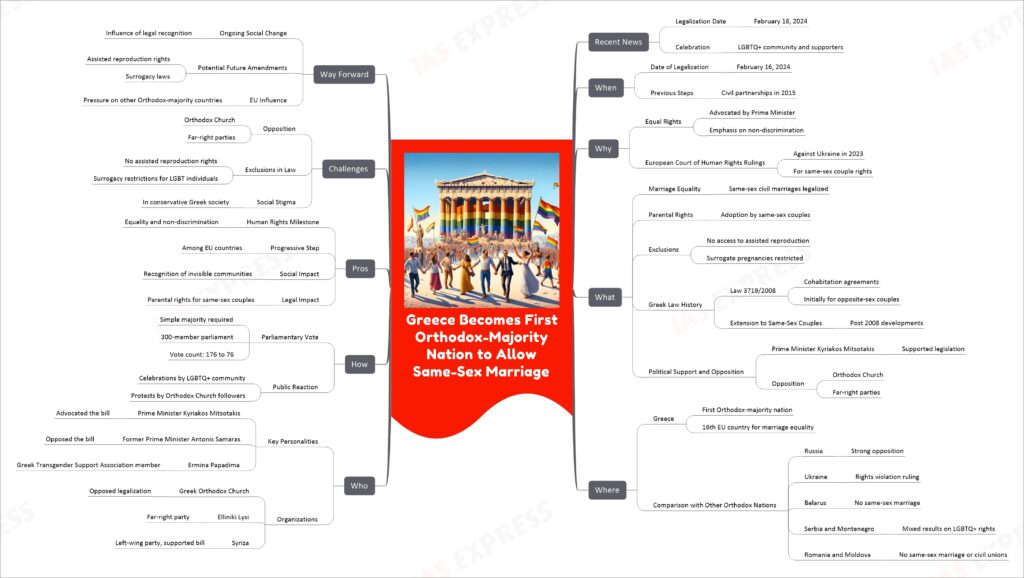
Greece has made a historic step by becoming the first Orthodox-majority country to legalize same-sex marriage, a decision formalized on February 16, 2024. This change allows same-sex couples not only to marry but also to adopt children, marking a significant shift towards equality and non-discrimination in the country. Despite facing strong opposition from the Orthodox Church and some political factions, the legislation passed in the Greek parliament signifies a move towards aligning with European Union standards on human rights and LGBTQ+ rights.
Prime Minister Kyriakos Mitsotakis played a pivotal role in advocating for this bill, emphasizing the importance of not having “second-class citizens” in Greece. The country had previously extended civil partnerships to same-sex couples in 2015 but without equal parental rights. Notably, the new law does not provide same-sex couples with access to assisted reproduction or surrogate pregnancies. The legalization represents both a significant achievement for LGBTQ+ rights in Greece and a progressive step among EU countries, but it also highlights ongoing challenges and exclusions in the law, such as the absence of assisted reproduction rights for LGBT individuals.
The impact of this legislation is profound, not just legally but also socially, as it grants visibility and recognition to previously marginalized communities. However, the journey towards full equality and acceptance in Greek society continues, with potential future amendments to the law and the ongoing influence of the European Union on other Orthodox-majority nations in the region.
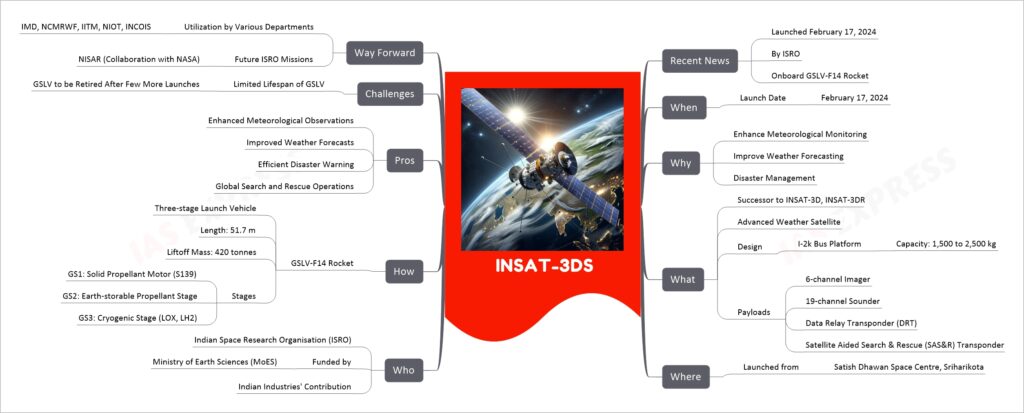
INSAT-3DS, launched by the Indian Space Research Organisation (ISRO) on February 17, 2024, aboard the GSLV-F14 rocket, marks a significant advancement in India’s meteorological monitoring and disaster management capabilities. This state-of-the-art satellite, a successor to INSAT-3D and INSAT-3DR, is designed to enhance weather forecasting and disaster warning efficiency. Built on the I-2k bus platform, INSAT-3DS is equipped with sophisticated meteorological instruments like a 6-channel Imager and a 19-channel Sounder, along with communication payloads for data relay and search & rescue operations. The mission, funded by the Ministry of Earth Sciences and supported by Indian industries, signifies a pivotal step in utilizing space technology for societal benefits.
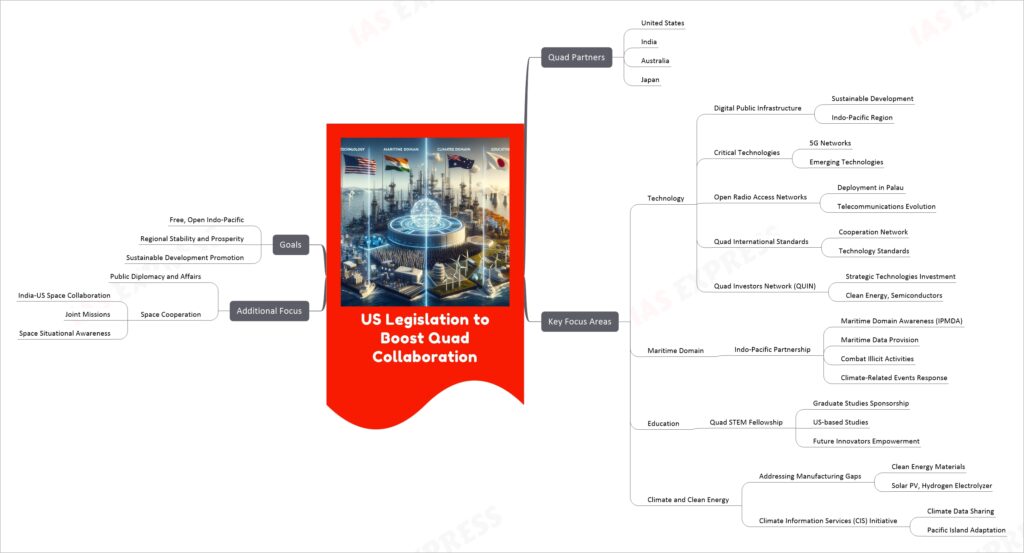
The recent US legislation to boost Quad collaboration aims to strengthen ties among the United States, India, Australia, and Japan. The focus of this collaboration spans various sectors, including technology, maritime domain, education, climate and clean energy, public diplomacy, and space cooperation. In technology, efforts are being made to enhance digital infrastructure, develop critical technologies like 5G, and establish open telecommunications networks. The maritime domain focus includes enhancing awareness and data sharing for better maritime security. Educationally, the Quad STEM Fellowship program is set to empower the next generation of innovators. Climate initiatives target the development of clean energy technologies and sharing climate information, particularly with Pacific Island nations. The collaboration also extends to space, with increased cooperation in space situational awareness and joint missions. Overall, this initiative aims to promote a free, open, and prosperous Indo-Pacific region, focusing on sustainable development and regional stability.
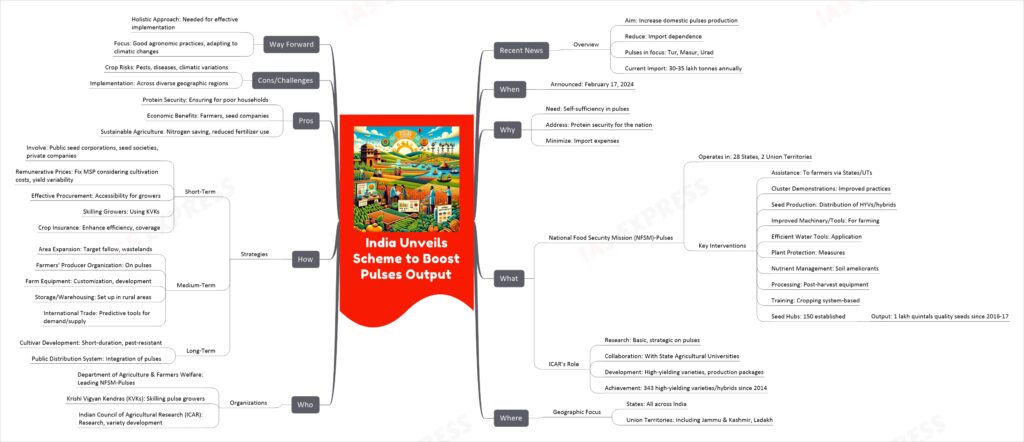
This scheme is an ambitious step towards enhancing India’s pulses production, leveraging various strategic approaches from short-term to long-term. The involvement of key organizations like the Department of Agriculture & Farmers Welfare, Krishi Vigyan Kendras, and the Indian Council of Agricultural Research highlights the scheme’s comprehensive nature. It aims to address the challenges of protein security, economic development, and sustainable agriculture practices in India.
In summary, India’s scheme to boost pulses output is a multi-faceted initiative aiming to enhance domestic production of pulses such as tur, masur, and urad. By involving a range of stakeholders and employing various strategies, the scheme seeks to reduce import dependence, ensure protein security, and promote sustainable agricultural practices.
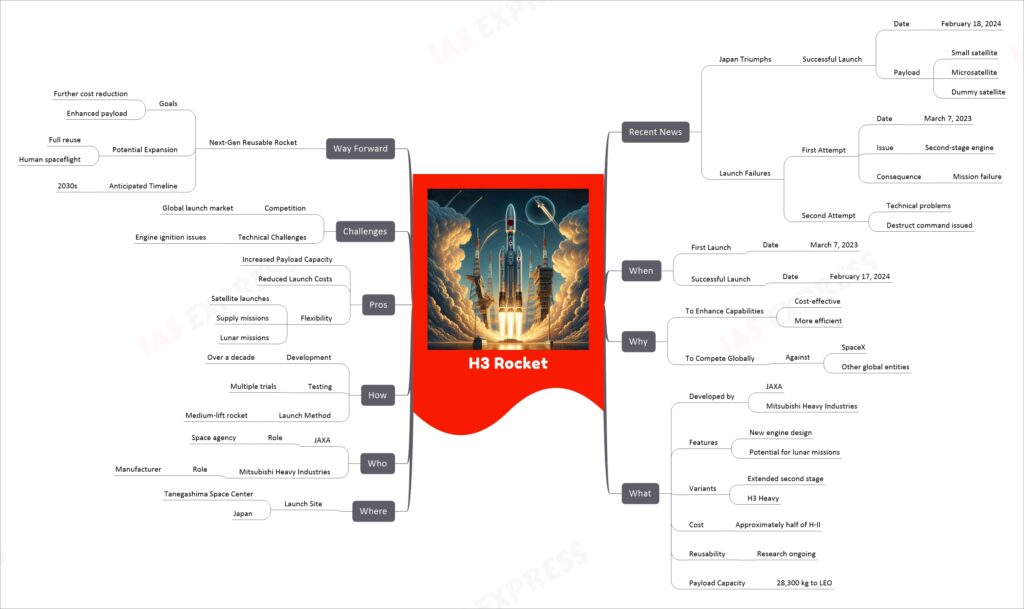
The H3 rocket, developed by JAXA and Mitsubishi Heavy Industries, is Japan’s latest advancement in space technology. Its development spanned over a decade, facing challenges including a failed first launch in March 2023 due to second-stage engine issues, and a subsequent failed attempt. However, it achieved success on February 18, 2024, launching a small satellite, a microsatellite, and a dummy satellite. This rocket is designed for efficiency and cost-effectiveness, aiming to halve the launch costs compared to its predecessor, the H-II rocket. The H3 is flexible, capable of launching satellites, supplying space stations, and supporting lunar missions. Future plans include developing a next-generation reusable rocket as part of Japan’s space policy, aimed at further reducing costs, increasing payload capacity, and potentially supporting human spaceflight by the 2030s.
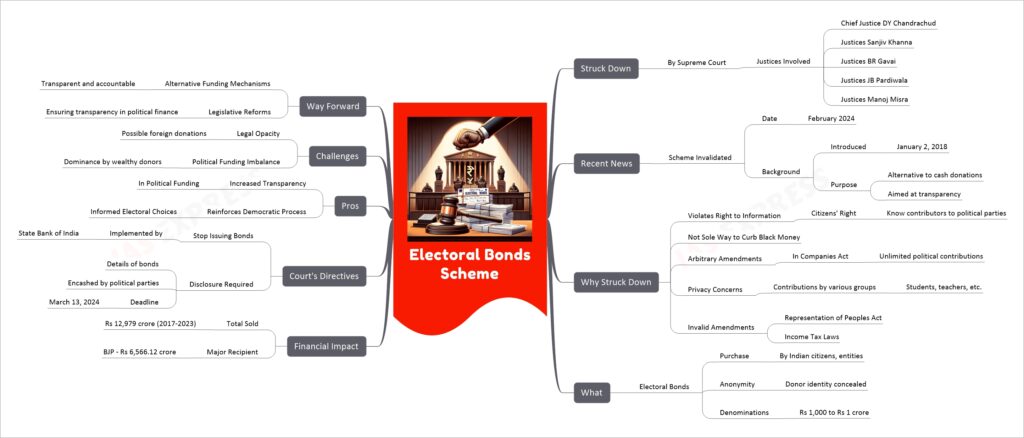
The Supreme Court of India, led by a five-judge Constitution bench including Chief Justice DY Chandrachud, recently declared the Electoral Bonds Scheme unconstitutional. Initiated on January 2, 2018, the scheme aimed at increasing transparency in political funding by allowing anonymous donations to political parties through bonds. The scheme was criticized for violating the Right to Information, as it kept the identity of donors hidden, potentially leading to opaque funding and quid pro quo arrangements. The Supreme Court’s decision emphasizes the need for transparency in political contributions, reinforcing the democratic process by ensuring that voters have access to essential information for making informed decisions.
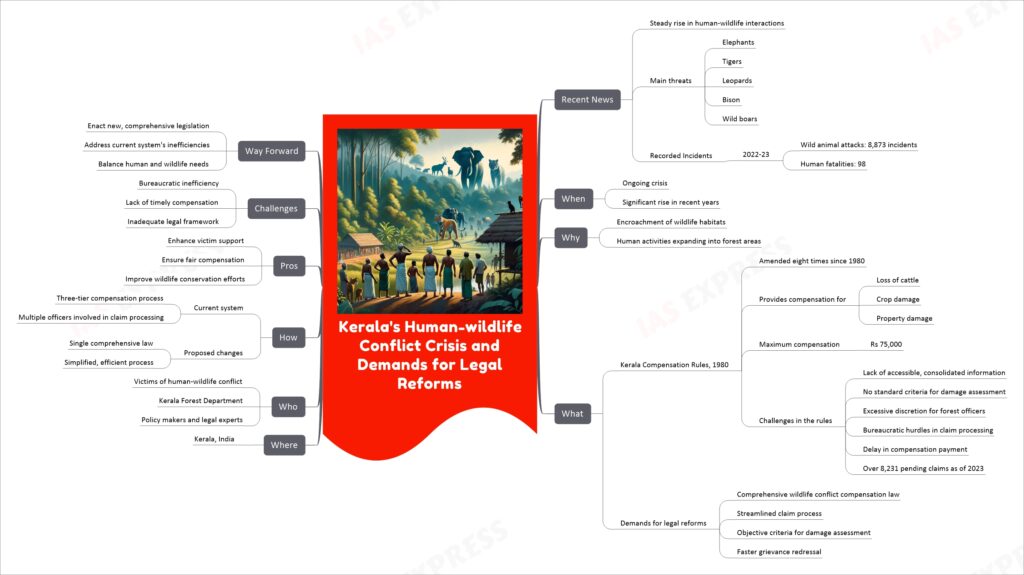
The crisis of human-wildlife conflict in Kerala has escalated in recent years, marked by increasing incidents of dangerous interactions between humans and wildlife such as elephants, tigers, leopards, bison, and wild boars. The current legal framework, the Kerala Compensation Rules of 1980, faces criticism for its inadequacies, including lack of accessible information, absence of standard criteria for damage assessment, bureaucratic hurdles, and delays in compensation. Legal experts and policy makers are calling for comprehensive legal reforms to address these issues and ensure more effective and timely support for victims.

The Tamil Nadu government announced the establishment of 39 One-Stop Centers (OSCs) to support persons with disabilities. These centers, funded by the World Bank’s RIGHTS project, aim to provide easier access to rehabilitation services and assistance with various schemes. Located at sub-divisional levels for better accessibility, each center will have a team of nine professionals, including psychologists, physiotherapists, and special educators, to offer comprehensive support and facilitate welfare activities.
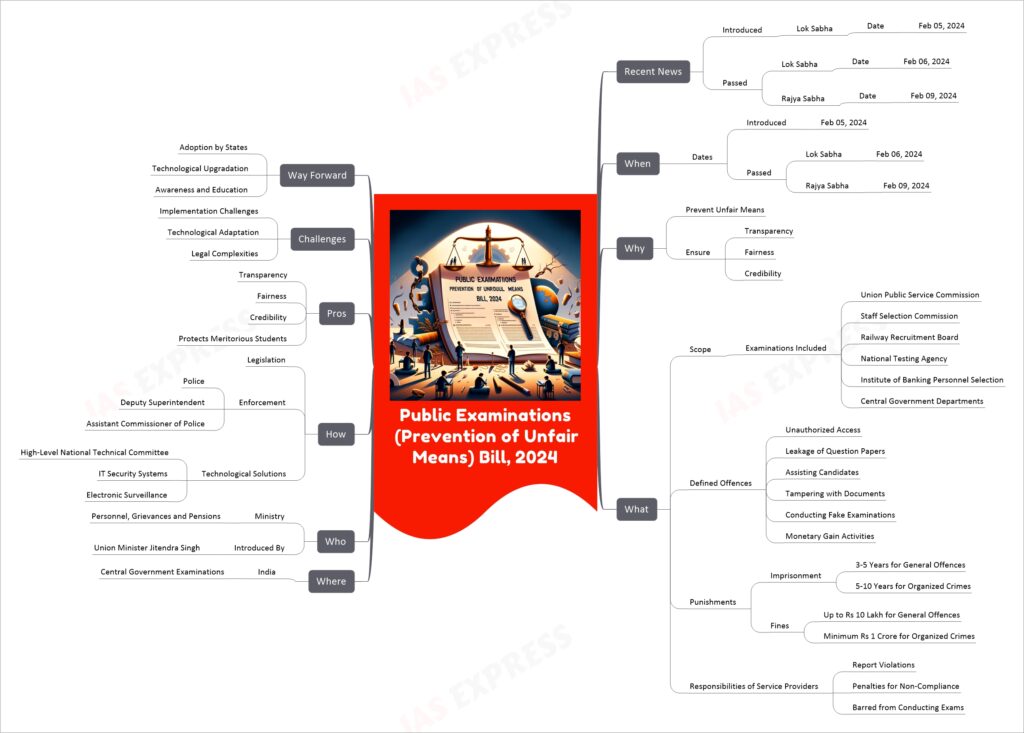
The Public Examinations (Prevention of Unfair Means) Bill, 2024, introduced in the Indian Parliament, aims to address and prevent malpractices in public examinations conducted by central authorities. It was introduced in the Lok Sabha on February 5, 2024, and passed in the Lok Sabha and Rajya Sabha by February 9, 2024. The Bill includes a range of public examinations such as those conducted by the UPSC, SSC, and other central agencies. Its key provisions include defining offenses related to unfair means in examinations, setting stringent punishments including imprisonment and fines, and outlining the responsibilities of service providers involved in examination processes. The legislation seeks to enhance transparency, fairness, and credibility in public examinations, addressing issues like paper leaks and cheating that have long plagued these tests. The Bill also includes the setup of a High-level National Technical Committee for technological solutions in examinations.
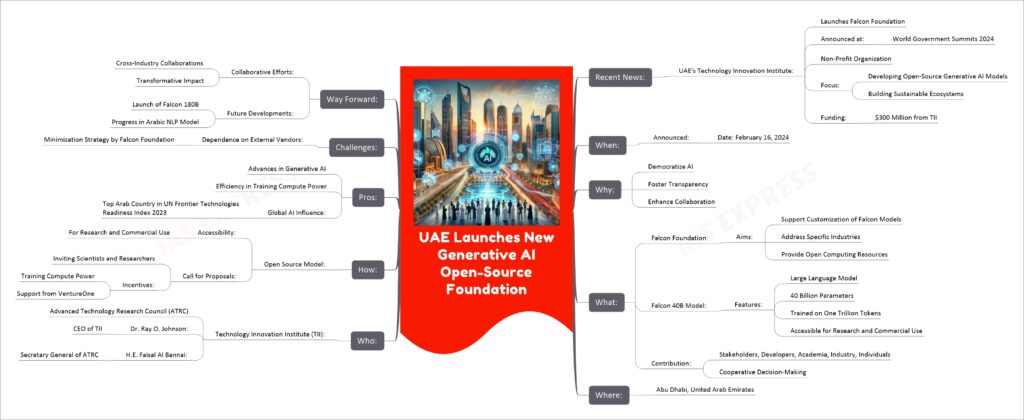
The UAE’s Technology Innovation Institute has recently launched the Falcon Foundation, a groundbreaking initiative focused on developing open-source generative AI models. The Foundation, announced at the World Government Summits 2024, is backed by a substantial $300 million funding from TII. Its primary goal is to democratize AI technology by supporting the customization of Falcon AI models for various sectors and providing open computing resources. The highlight of this initiative is the Falcon 40B model, a large language model with impressive capabilities, made accessible for both research and commercial use. This launch is a significant step towards enhancing collaboration, fostering transparency in AI, and positioning the UAE as a leader in global AI development.
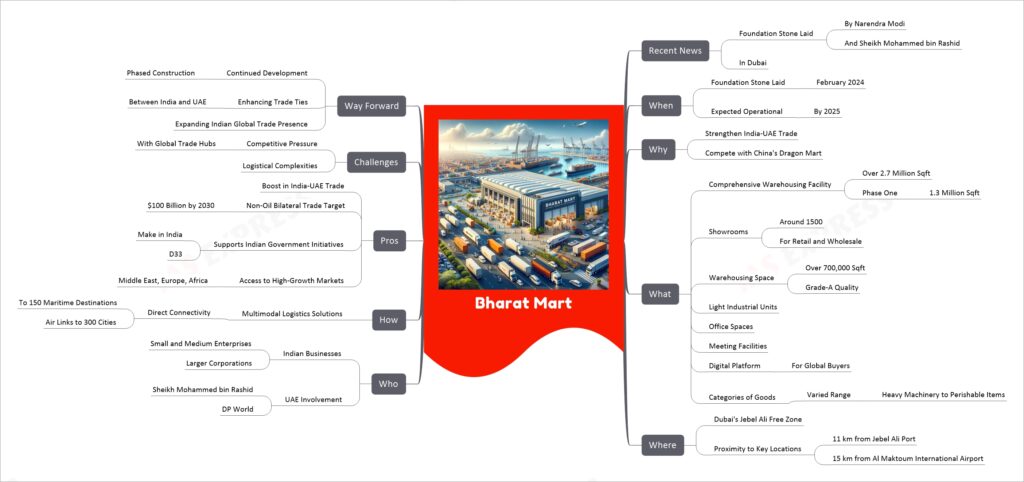
Bharat Mart, set to open in Dubai by 2025, is an expansive warehousing facility initiated by India to enhance its trade presence in the Middle East and compete with global trade hubs like China’s Dragon Mart. Conceived over an area of more than 2.7 million square feet, the facility will feature 1,500 showrooms for retail and wholesale, substantial warehousing space, and various business amenities. Located strategically near Jebel Ali Port and Al Maktoum International Airport, it aims to strengthen India-UAE trade, targeting $100 billion in non-oil bilateral trade by 2030. The project aligns with Indian government initiatives like Make in India and D33, offering Indian businesses, especially SMEs, an efficient gateway to high-growth markets in the Middle East, Europe, and Africa.
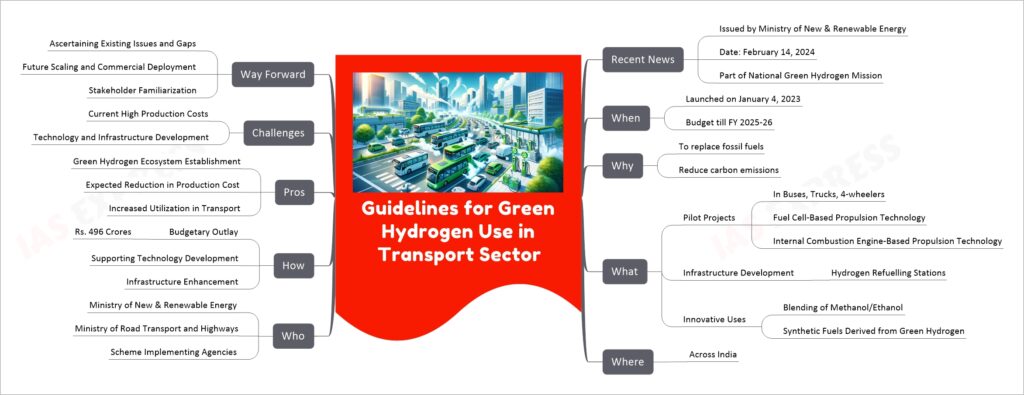
In summary, the guidelines for Green Hydrogen Use in the Transport Sector in India are a part of the National Green Hydrogen Mission. Launched in 2023, this initiative aims to replace fossil fuels with green hydrogen in buses, trucks, and 4-wheelers, and develop related infrastructure like hydrogen refueling stations. It is a significant step towards reducing carbon emissions in the transport sector and building a green hydrogen ecosystem, supported by a budgetary outlay of Rs. 496 Crores until FY 2025-26.
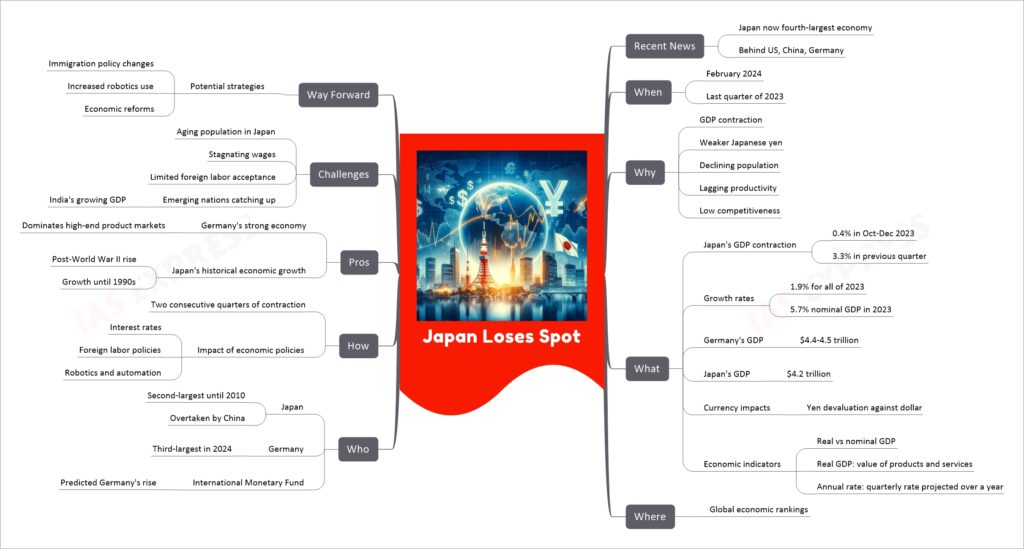
Japan has recently lost its position as the world’s third-largest economy, slipping to fourth place behind the United States, China, and now Germany. This shift occurred in February 2024 following Japan’s economic contraction in the last quarter of 2023. Key factors contributing to this decline include a significant decrease in the value of the Japanese yen against the dollar, a shrinking and aging population, and challenges in productivity and competitiveness. In contrast, Germany’s economy has grown to $4.4-4.5 trillion, surpassing Japan’s $4.2 trillion. The decline of Japan’s economy, which was once hailed as an “economic miracle” post-World War II, reflects broader global economic shifts and the rising prominence of other nations like India.
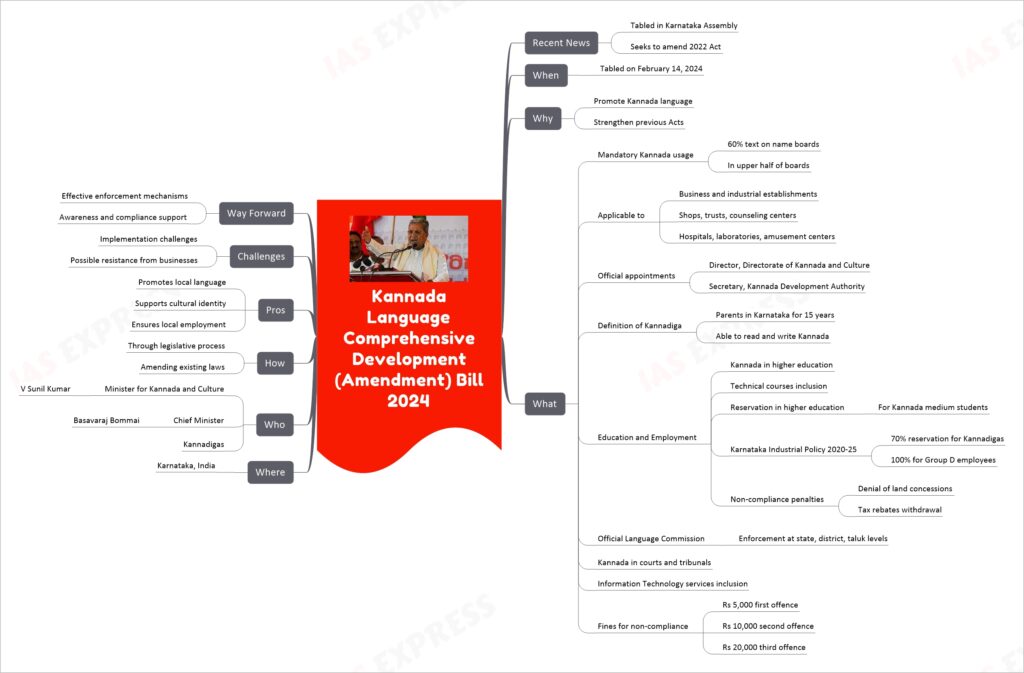
The Kannada Language Comprehensive Development (Amendment) Bill, 2024, tabled in the Karnataka Assembly, aims to reinforce the use of Kannada in the state. Key provisions include making 60% of the text in Kannada mandatory on name boards of business and industrial establishments, and defining “Kannadiga” as residents whose parents have lived in Karnataka for at least 15 years and can read and write Kannada. It seeks to incorporate Kannada in higher education, technical courses, and enforce reservation for Kannadigas in employment. The bill also introduces fines for non-compliance and proposes setting up an Official Language Commission for effective implementation at various administrative levels. The bill is an amendment to the existing Acts and is a significant step towards promoting the Kannada language and culture.
If you like this post, please share your feedback in the comments section below so that we will upload more posts like this.
